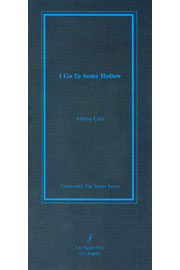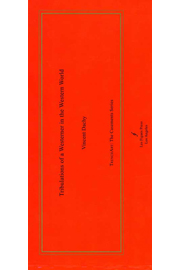A Fixed, Formal Arrangement
Allison Carter
Introduction by Danielle Dutton
Cover art by Ken Ehrlich and Susan Simpson
Book 2 of 5, TrenchArt Tracer Series
Prose | $15.00
ISBN 13: 978-1-934254-07-3
Size: 9.25″ X 4.25″
Pages: 109
Binding: Softcover, Perfect
BUY NOW at LARB BOOKS
In A Fixed, Formal Arrangement, Carter uses the short prose form to render the liminal space of between-ness. What exactly is “spare” time? Is a comma as servile as they say? Is a garage located inside or outside? What is the world, and why/how does it exist around you? These are the best questions of literature, and Carter’s short, serial pieces are brilliantly precise and heart-achingly poignant in their strange explorations.
A Fixed, Formal Arrangement is published as part of the TrenchArt: Tracer Series, with an Introduction by Danielle Dutton and visual art by Ken Erhlich and Susan Simpson.
Praise for A Fixed, Formal Arrangement
“Allison Carter writes the small and indelible installments of domestic life; what fits in a pocket, a post-it, just below the radar. In lovely prose, she challenges us to imagine the bigger picture just outside the frame. The two halves of A Fixed, Formal Arrangement present the house and its environs, its occupants as though under a sudden microscope, or as if the sound had just become audible. There is something both eerie and real about this microscopic world, the way one feels the first time you realize that ants have complex lives. What? That’s us? Yes. In this great debut book.”
—Thalia Field
“In A Fixed, Formal Arrangement, Allison Carter relinquishes all negotiable capital, all legitimate emotions, all historical certainties. She is trending, instead, toward the hell-that-won’t-be-denied, itself a slippery slope of desire, a here that won’t congeal, the outside that won’t stay out. Identity is not premeditated – it’s worn incompletely and it never fits, nor stays in place. It has no history and no forecast. Carter’s work is a struggle to dream itself into consciousness: to reel disjointed narrative fragments back into the room, the garage, the dream (wherever) while allowing parts of the narrator herself, (whatever), to escape and fly free. There is a movement from the connectedness that demands unconsciousness-formed-of-fear toward an unattached freedom from fear, generously rational in its solid irrational roots. What is foregrounded when ‘…he sneezes, black space comes out, some gets on me,…’; where is the subject if ‘…Can’t find what I’m doing written down,’, and what is authentic as ‘I pull on sweatpants that express my limbs.’ Carter asks us to forget the question. Stop yourself mid-order. Her ‘best version of time’ would be ‘getting things running by single moments,… and then the exchange.’ Let your self go and read this book. Be disjointed. Or find your self joined. Twist who’s voicing and who’s listening: ‘The space around me is undergoing an ultimate kind of recoherence….’ Feel.”
—Diane Ward
“I was reminded of Woolf, of Stein, of Diane Williams. I jotted these names: Renee Gladman, Thalia Field, Pamela Lu. A tradition of women writing. Of experimental prose. Or maybe Ben Marcus, okay, or Robbe-Grillet. But. None of these references felt exactly right.”
—Danielle Dutton
A review by Scott Butterfield at Diagram
A review by JoSelle Vanderhooft at The Pedestal Magazine
A review by Jacquelyn Davis at Bookslut








